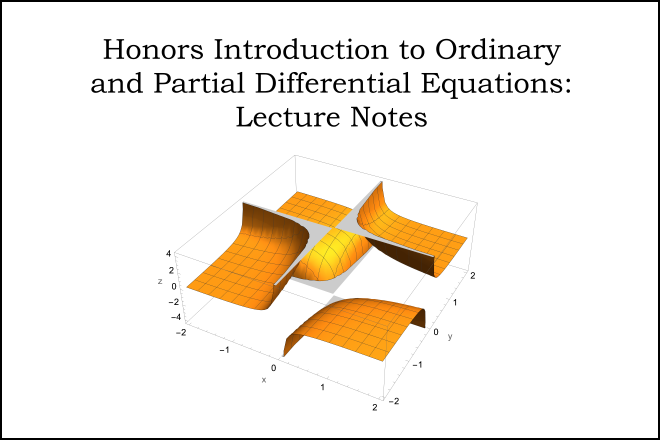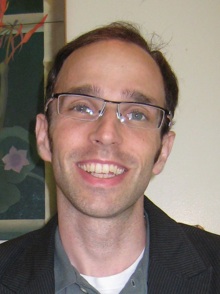Honors Introduction to Ordinary and Partial Differential Equations: Lecture Notes

Credit: Image adapted from a figure by Christopher Griffin and is licensed under CC BY-NC-SA 3.0 US
Resource Description
This is a set of lecture notes for MATH 251H, Honors Ordinary and Partial Differential Equations. Differential equations (along with Linear Algebra and Complex Analysis) form the basis of all theoretical science and engineering. In a sense, differential equations represent the ultimate fulfillment of the initial work of Newton and Leibniz — a complete mathematical description of continuously changing phenomena. Without differential equations, we may not have walked on the moon, developed cell phone technology, seen black holes or have GPS systems. For whatever reason, differential equations seem to be the only way to coherently understand the universe.
The lecture notes are loosely based on a number of books, all of which are fine but none of which do I love. I spend very little time on transient behavior in damped oscillators – mainly because I don’t find it terribly interesting. However, following Borelli and Coleman's Differential equations: A Modelling Perspective, we do talk about beat frequency. The Laplace transform is used mainly to get at Green’s functions, on which we briefly touch and I unabashedly use the fact that that Laplace transform variable (usually s) is imaginary. In systems, I eschew the usual discussion and go straight to the solution as a matrix exponent. The information on matrix diagonalization is taken from my Linear Algebra notes. We discuss but don’t prove the Jordan decomposition to explain why teλt shows up in solutions with degenerate eigenspaces because I cannot abide the “let’s guess a solution...” approach. Most classes never get to the explanation of why that guess was right, so it leaves one feeling rather empty.
Finally, I tried writing these notes in “lesson” and “module” format rather than as chapters.

